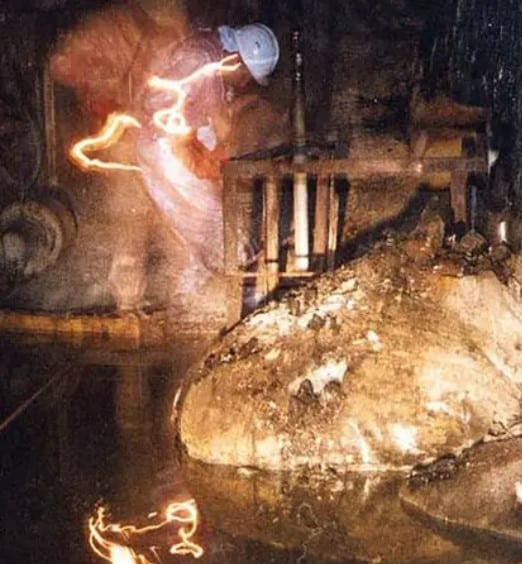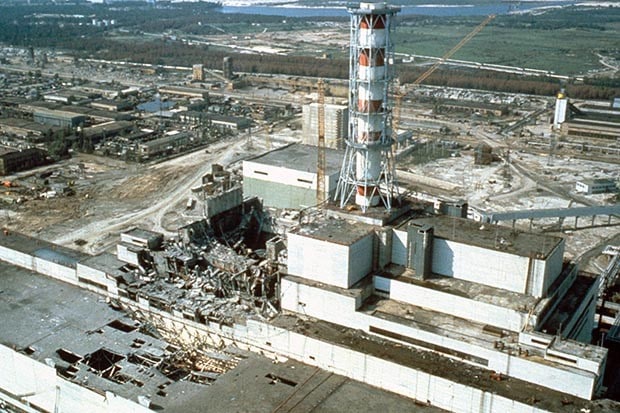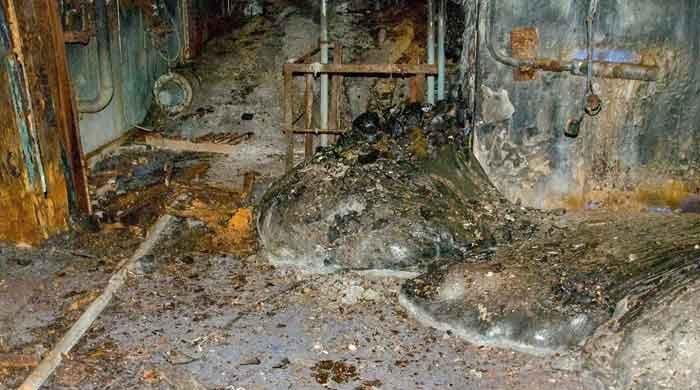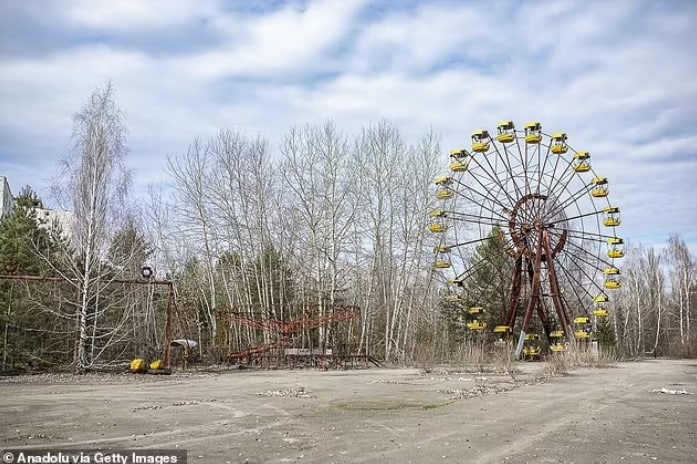The World’s Most Dangerous Object, “Elephant’s Foot”, Is A Lethal Dose In 300 Seconds
Deep in the Chernobyl exclusion zone, near Pripyat, Ukraine, there exists a highly radioactive object called the Elephant’s Foot.
This toxic mass, named for its strange shape, is considered the most dangerous object on Earth, capable of causing death within minutes.
It formed after the 1986 nuclear disaster and was discovered by emergency crews in December of that year in a steam corridor beneath the ruined Reactor Number 4.
According to the science magazine Nautilus, the black lava flowing from the reactor’s core emitted enough radiation to deliver a lethal dose in just 300 seconds.
Exposure for 30 seconds would cause dizziness and fatigue. Two minutes of exposure would lead to hemorrhaging. Four minutes would result in vomiting, diarrhea, and fever.
The discovery and nature of the Elephant’s Foot
Approximately 30 people died from immediate blast trauma and acute radiation syndrome (ARS) in the seconds to months after the Chernobyl disaster in April 1986.
Eight months after the nuclear accident, workers made a surprising discovery.
When they entered a corridor below… pic.twitter.com/7Tp7pw44ly
— Morbid Knowledge (@Morbidful) May 11, 2024
The Elephant’s Foot was so radioactive that scientists had to use a camera on wheels to photograph it. A few brave researchers managed to get close enough to collect samples for study. They discovered that the Elephant’s Foot wasn’t the leftover nuclear fuel they expected.
Instead, nuclear experts identified it as corium, a rare material created in nuclear accidents. Corium forms when nuclear fuel and parts of the reactor core overheat and melt together.
It’s reported that this substance, the “Elephant’s Foot,” has only been formed five times: at Chernobyl, during the Three Mile Island accident in Pennsylvania in 1979, and three times during the Fukushima Daiichi disaster in Japan in 2011.

Edwin Lyman, the director of nuclear power safety at the Union of Concerned Scientists, explains in an email, “If a core melt cannot be terminated, then eventually the molten mass will flow downward to the bottom of the reactor vessel and melt through (with a contribution of additional molten materials), dropping to the floor of the containment.”
“The hot molten mass will then react with the concrete floor of the containment (if there is one), again changing the composition of the melt,” Lyman continues.
“Depending on the type of reactor, the melt can spread and melt through the containment walls or continue to melt through the floor, eventually infiltrating groundwater (this is what happened at Fukushima). When the melt cools sufficiently, it will harden into a hard, rock-like mineral.”

In an email, Mitchell T. Farmer, a veteran nuclear engineer and program manager at the Argonne National Laboratory, says that corium looks “a lot like lava, a blackish-oxide material that gets very viscous as it cools down, flowing like sticky molten glass. That is what happened at Chernobyl with the Elephant’s Foot.”
After the nuclear fires were finally brought under control, workers, known as “liquidators,” went back to the Chernobyl site to manage the remaining dangers.
They constructed a massive concrete structure to contain the radiation and prevent it from escaping into the outside world. Some sections were left open so workers could still enter and do their jobs.
The ongoing dangers posed by the Elephant’s Foot

The mess that created the Elephant’s Foot is incredibly dangerous. Even after nearly 40 years since the nuclear disaster, the mass and its surroundings remain unsafe, polluted with dangerous levels of radioactivity. Experts think the Elephant’s Foot might be the most dangerous piece of waste in the world and today, entering the chamber where it slowly cools is like signing a death sentence.
Edwin Lyman explains that corium, like the Elephant’s Foot, is much more hazardous than undamaged spent fuel. It’s in an unstable state, making it harder to handle, package, and store safely.
He says, “To the extent that corium retains highly radioactive fission products, plutonium, and core materials that have become radioactive, corium will have a high dose rate and remain extremely hazardous many decades or even centuries to come.”

Very hard solidified corium, such as the Elephant’s Foot, would need to be broken up to be removed from damaged reactors. This process “will generate radioactive dust and increase hazards to workers and possibly the environment,” he adds.
What’s even more concerning is that scientists are uncertain about how corium will behave over the long term, especially when stored in a nuclear waste repository.
Currently, they know that the Elephant’s Foot is not as active as it once was and is gradually cooling on its own. This cooling process will continue over time. However, it is still in a state of meltdown and remains highly radioactive.
Efforts to study Elephant’s Foot and prevent Chernobyl-like disasters

Scientists are working on replicating the Elephant’s Foot’s chemical makeup in the lab, but they note that their version isn’t a perfect match. This means the results of their studies should be viewed with some skepticism.
Meanwhile, researchers are focused on finding ways to prevent future disasters like Chernobyl and the creation of phenomena like the Elephant’s Foot.
In 2016, a massive structure called the New Safe Confinement (NSC) was installed over Chernobyl to stop further radiation leaks. Within this shield, another steel framework was constructed to support the crumbling concrete sarcophagus around reactor No. 4.

